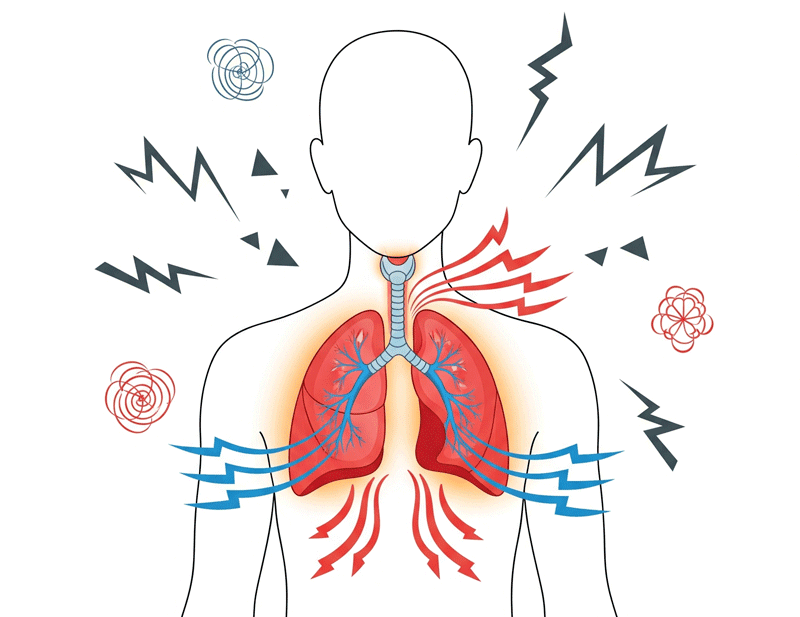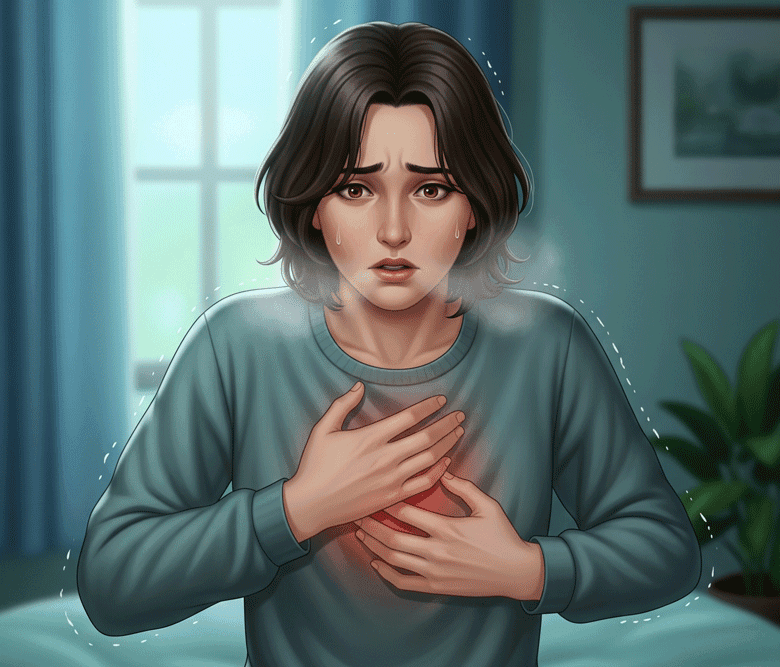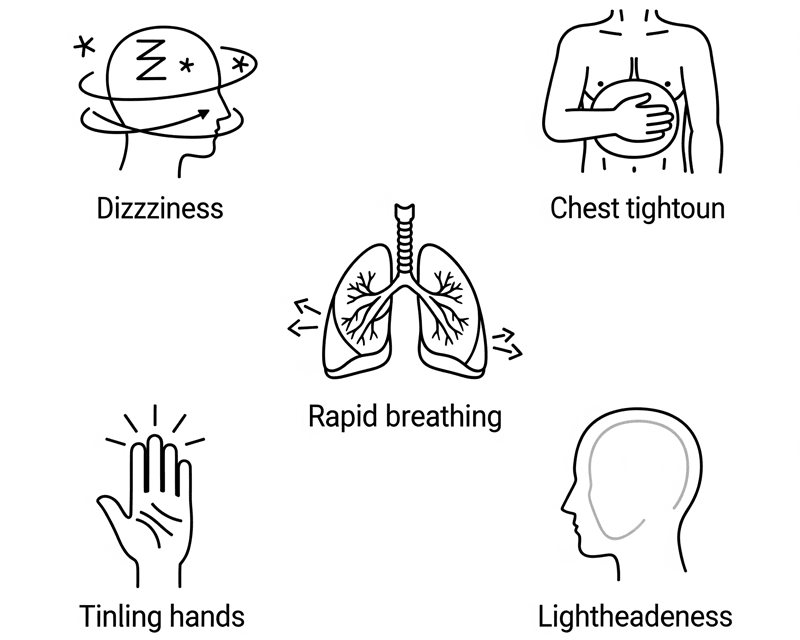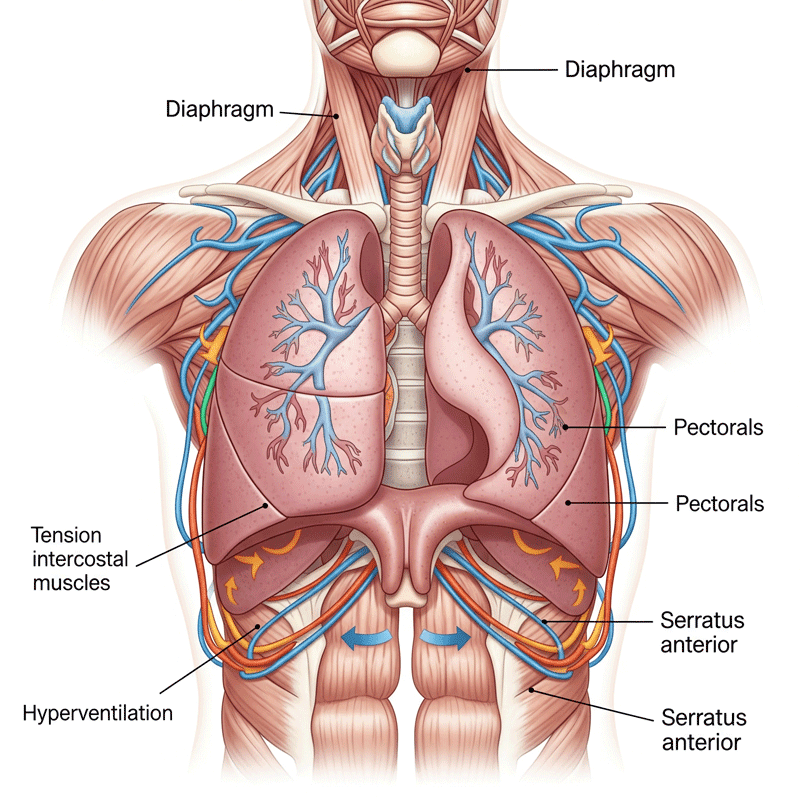Stress is an unavoidable part of life, but when it starts affecting how you breathe, it can significantly impact your health and comfort. Stress breathing problems are common yet often misunderstood symptoms that range from shallow breathing to feelings of shortness of breath. Recognizing and managing these issues is crucial to maintaining both physical and mental well-being.
In this article, we will explore 7 essential facts about stress breathing problems, explain why they happen, and share effective strategies to overcome them.
What Exactly Are Stress Breathing Problems?

Stress breathing problems refer to a variety of breathing difficulties caused or worsened by stress and anxiety. When your mind perceives a threat—whether real or imagined—it triggers the body’s “fight or flight” response, preparing you to react quickly. This reaction causes your breathing to speed up and become shallow, which can disrupt the natural balance of oxygen and carbon dioxide in your bloodstream.
This imbalance often leads to symptoms such as rapid breathing, chest tightness, or the sensation that you can’t get enough air. Over time, these symptoms can become more frequent and severe if left unaddressed.
Can Stress Cause Shortness of Breath? Here’s What You Need to Know

One of the most common questions related to stress and breathing is: Can stress cause shortness of breath? The short answer is yes—stress can absolutely trigger feelings of breathlessness, even when your lungs and heart are healthy.
When your body perceives stress, it activates the “fight or flight” response, releasing hormones like adrenaline that prepare you to react quickly. This causes your breathing to become faster and shallower, known as hyperventilation. While this helps supply oxygen quickly in true emergencies, in everyday stress it can lead to an imbalance of oxygen and carbon dioxide in your blood.
This imbalance causes symptoms like dizziness, tingling, chest tightness, and the sensation of not being able to get enough air, often described as shortness of breath. For many people, this experience is frightening and confusing, especially if it happens frequently during anxiety or stressful situations.
Understanding that stress causes shortness of breath helps you differentiate between anxiety-related symptoms and those requiring medical attention. It also empowers you to take appropriate steps—like breathing exercises or mindfulness—to manage the symptom effectively.
If you’re experiencing frequent or severe episodes of shortness of breath, it’s important to consult a healthcare provider to rule out other causes and receive proper care.
5 Common Symptoms of Stress Breathing Problems You Should Know

Recognizing symptoms early can help you take control before the problem worsens. The most common signs of stress breathing problems include:
- Rapid, shallow breaths
- Feeling unable to take a deep, full breath
- Chest tightness or discomfort
- Dizziness or lightheadedness
- Tingling sensations in fingers or around the mouth
If you experience these symptoms frequently, especially during stressful situations, it’s important to address the root causes to prevent escalation.
How Stress Causes Breathing Problems: The Science Behind It

To fully grasp why stress causes breathing problems, it helps to understand the physiological process:
- Fight or Flight Activation: Stress triggers the release of hormones like adrenaline and cortisol, increasing your heart and breathing rates.
- Muscle Tension: Stress causes muscles, especially those controlling breathing such as the diaphragm and intercostal muscles, to tense up, restricting chest expansion.
- Hyperventilation: Rapid, shallow breathing expels too much carbon dioxide, disrupting blood pH balance and causing symptoms like dizziness and tingling.
This combination of effects creates a cycle where physical symptoms worsen anxiety, and anxiety further disrupts breathing.
7 Practical Strategies to Manage Stress Breathing Problems Effectively

Fortunately, there are proven methods to manage and reduce stress breathing problems:
- Practice Deep Breathing Exercises: Techniques like the 4-7-8 method slow your breath, restore oxygen balance, and calm the nervous system.
- Use Mindfulness and Meditation: Regular mindfulness practice helps lower stress hormones and improves breathing patterns.
- Engage in Regular Physical Activity: Exercise increases lung capacity, reduces anxiety, and improves cardiovascular health.
- Identify and Limit Stress Triggers: Tracking your stressors allows you to develop coping strategies or avoid unnecessary triggers.
- Seek Professional Help: Cognitive-behavioral therapy (CBT) and counseling can address underlying anxiety effectively.
- Try Progressive Muscle Relaxation (PMR): PMR reduces muscle tension that contributes to breathing difficulties.
- Maintain a Healthy Lifestyle: Proper nutrition, hydration, sleep, and limiting caffeine help support your body’s stress response.
Applying these strategies consistently can break the cycle of stress-induced breathing problems and improve your quality of life.
When to Seek Medical Attention for Breathing Issues

While stress breathing problems are usually manageable, it’s critical to recognize when symptoms require professional evaluation:
- Persistent or worsening shortness of breath
- Chest pain or pressure
- Fainting or severe dizziness
- Symptoms triggered by minimal exertion
If you experience any of these, seek immediate medical advice to rule out heart or lung conditions.
Why Early Intervention Matters for Stress Breathing Problems

Ignoring stress breathing problems can lead to increased anxiety, panic attacks, and reduced daily functioning. Early intervention not only alleviates symptoms but also prevents chronic health issues related to prolonged stress.
By understanding that stress causes breathing problems and taking proactive steps, you empower yourself to regain control over your body and mind.
Conclusion: Take Control of Your Breathing and Stress Today
Stress and breathing problems often go hand in hand, but they don’t have to control your life. By learning the connection between stress and breathing, recognizing symptoms early, and implementing effective coping strategies, you can overcome these challenges.
Remember, if you’re ever in doubt about your symptoms, consulting a healthcare professional is always the best choice. Taking action today helps ensure better health and peace of mind tomorrow.













